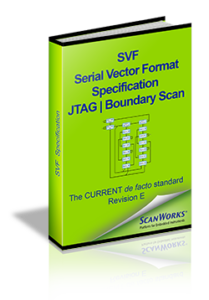SVF | Serial Vector Format Specification JTAG | Boundary Scan
Home / eResources / SVF | Serial Vector Format Specification JTAG | Boundary Scan
Serial Vector Format (SVF) is a file format consisting of boundary scan vectors to be sent to a device under test so that such information can be exchanged among various tools. Originally developed by Teradyne and Texas Instruments, it was handed over to TI spinoff ASSET InterTech, who manages and maintains the specification. Having been adopted for its expressed purpose by a large number of companies, it is the de facto standard.
SVF is designed to encourage reuse of serial vectors throughout the life cycle of a product, from its inception in design, through manufacturing and assembly, during its deployment in the field, and including all phases in between. The specification defines an ASCII file that contains command statements and associated parameters. Applications include transfer of test vectors, such as for board structural test, from test generator to tester and transfer of programming vectors, such as for onboard flash and CPLDs, from design compilers to programmers.
For your own copy, just click the download button and you will receive the CURRENT specification.
The SVF specification for JTAG, boundary scan defines:
- Stimulus data: data sent to a device
- Expected data: data received from a device
- Mask data: data to be ignored among the received data
- Additional information such as the max clock frequency


